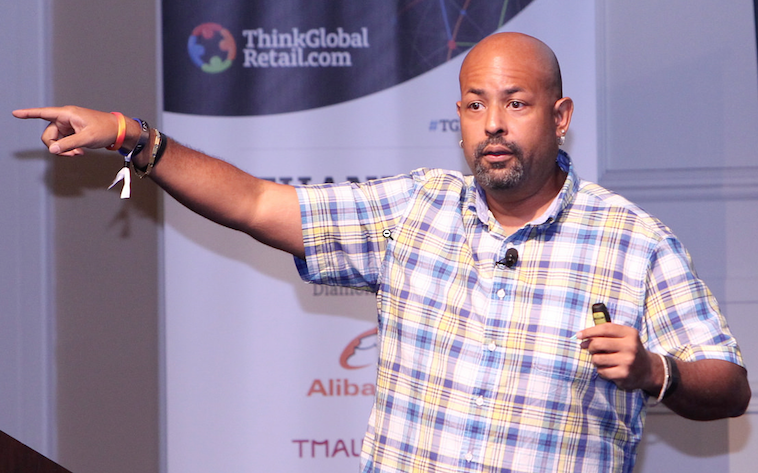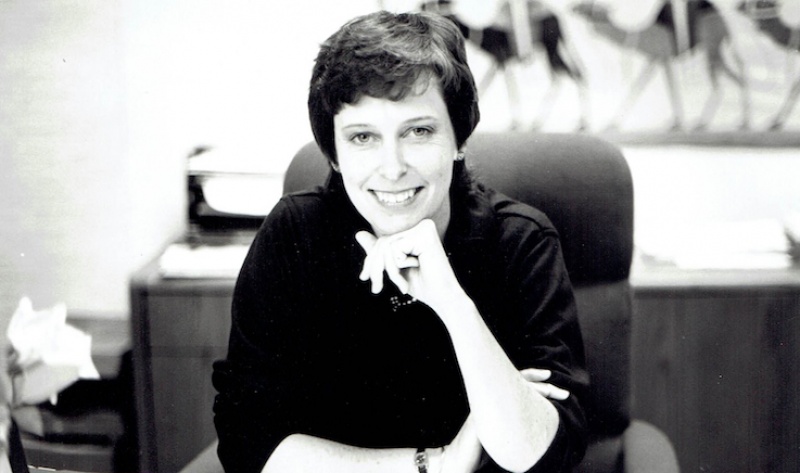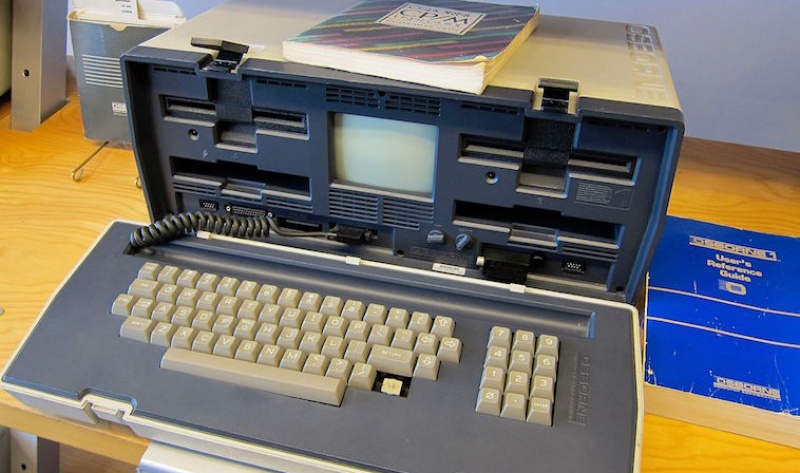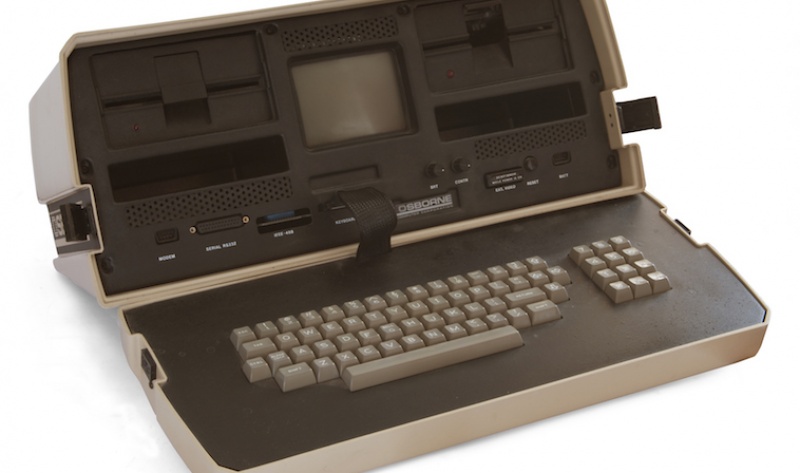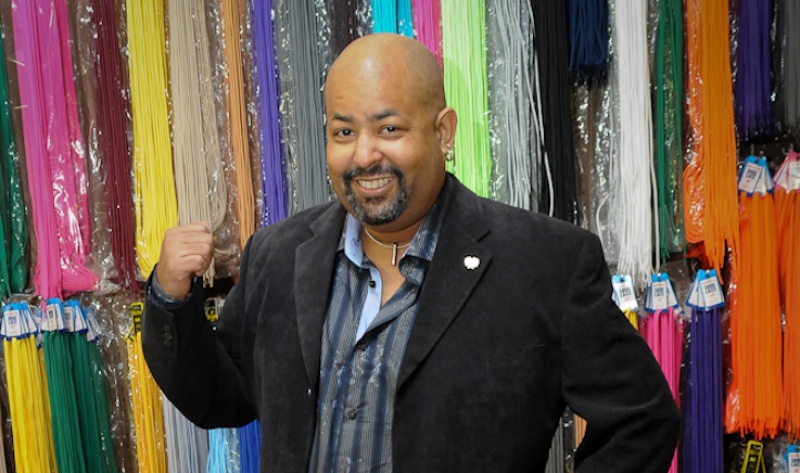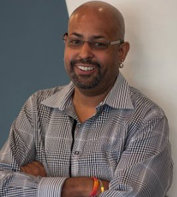Episode Transcript
JOHN HENRY: I’m John Henry, and this is Open for Business, a branded podcast from eBay and Gimlet Creative about building a business from the ground up. This week on the show: one of the most important and yet much maligned and misunderstood parts of starting your own business: marketing! The term “marketing” can be confused for spin, or manipulation, for telling a story that convinces people to part with their hard earned cash for something they may not need, or even want. And yeah, there’s marketing that aims to do that. But this episode isn’t about that kind of marketing. It’s also not about buying Facebook impressions or Google ads. This episode is about telling your story to your potential customers in a way that resonates with them. And we start today with a company on the rise, a company headed toward stratospheric success...until their made a marketing blunder to end all marketing blunders.
JOHN HENRY: I’m John Henry, and this is Open for Business, a branded podcast from eBay and Gimlet Creative about building a business from the ground up. This week on the show: one of the most important and yet much maligned and misunderstood parts of starting your own business: marketing! The term “marketing” can be confused for spin, or manipulation, for telling a story that convinces people to part with their hard earned cash for something they may not need, or even want. And yeah, there’s marketing that aims to do that. But this episode isn’t about that kind of marketing. It’s also not about buying Facebook impressions or Google ads. This episode is about telling your story to your potential customers in a way that resonates with them. And we start today with a company on the rise, a company headed toward stratospheric success...until their made a marketing blunder to end all marketing blunders.
CHODI MCREYNOLDS: Well, the company had high visibility. It was probably the equivalent of Google or Facebook today.
JOHN HENRY: This is Chodi McReynolds. She’s a former Vice President of Operations at The Osborne Computer Corporation.
CHODI MCREYNOLDS: It was well known, it was getting a lot of press and was considered the product to own. And there was a lot of buzz. A lot of people wanted to work at Osborne.
JOHN HENRY: The Osborne Computer Corporation helped pioneer a product you may have on your desk or in your bag right now: Laptops. But, back in 1981, they were called something else.
JOHN HENRY [tape]: So it was considered the first portable computer?
CHODI: Yes it was. Or luggable I think. Portable would be kind of stretch. It was classified as a luggable. It was 27 pounds, 28 pounds, and had a screen, a built in screen.
JOHN HENRY: Luggable is not a word we use to describe computers today. But this was 35 years ago and a computer you could lug, a computer you could move at all, was a huge deal. Consumers were excited about the Osborne Computer Corporation, and so was the media.
CHODI MCREYNOLDS: Time Magazine had done an article on it, and obviously the Wall Street Journal. So, it had a lot of press outside of industry press. I can remember, you know, on 60 minutes, they were talking about, “well are you going to make a lot of money?” And I think two of the young VPs said, “yes, we’re going to be very, very wealthy.”
JOHN HENRY: That 60 Minutes segment aired in November of 1982. In the piece, 60 Minutes correspondent Morley Safer talked about a young guy named Steven Jobs. He talked about Intel and Microsoft, but the focus of the story was the rising star, the Osborne Computer Corporation and its new computer.
MORLEY SAFER: It's called the Osborne, after it's creator Adam Osborne, a British immigrant with a bright idea.
ADAM OSBORNE: I'm going to run every typewriter out of every office with machines like mine.
JOHN HENRY: That is Adam Osborne, and in case it doesn’t come through in that clip, he was a very confident man. Here’s Morley Safer interviewing Osborne:
MORLEY SAFER: You compare yourself to Henry Ford, how does that comparison work?
ADAM OSBORNE: Well, what I'm doing is I'm giving you the fundamental machine that does what most people want done, and if you want the extras or the frills, you go pay a lot more money and get it from someone else.
MORLEY SAFER: Well, you're making a profit at $1800?
ADAM OSBORNE: Oh, yes. An excellent one.
MORLEY SAFER: You could sell it even cheaper than, theoretically?
ADAM OSBORNE: Oh yes.
MORLEY SAFER: And still make a profit?
ADAM OSBORNE: Sure. I won't, why should I?
JOHN HENRY: Adam Osborne wasn’t just a pioneer in the product, the portable computer, he was also a pioneer when it came to selling it. And it’s a model that’s become so standard on computers and mobile devices, we don’t even think about it anymore.
JOHN C. DVORAK: The invention of the Bundle. He had managed to do a deal with a bunch of software companies to bundle the software with the computer.
JOHN HENRY: That is journalist John C. Dvorak. Before Adam Osborne’s death in 2003, Dvorak co-authored a book with Osborne called HyperGrowth: The Rise and Fall of The Osborne Computer Corporation. John also hosts a podcast called No Agenda.
JOHN C. DVORAK: And when you took the total cost of the software, and all important software, not just slouchy software that nobody wanted, the software was valued at more than the price of the computer. This was the genius of the Osborne computer. Shortly thereafter, everybody did this. But he had a head start, about a year’s head start at least. And he was just selling these things like hotcakes. So they were growing like crazy.
JOHN HENRY: So, by the end of 1982, The Osborne Computer Corporation seemed like it was on track to become a Silicon Valley giant. But, chances are, you’ve never heard of them.
JOHN HENRY [tape]: Why?
JOHN C. DVORAK: I would say it was a totally a marketing error - in fact, er, I would use the word blunder.
CHODI MCREYNOLDS: So Osborne did make, you know, a marketing blunder. It was a thoughtless deed that had a huge impact on a really, really interesting company.
JOHN HENRY: The main reason we don’t talk about the Osborne Computer Corporation today is a marketing blunder. Marketing is a broad term. It can mean promoting your products publicly. It can include advertising. But a crucial part of marketing is just the basic act of talking about your product or brand to the outside world. That was at the heart of Adam Osborne’s marketing blunder, and here is how that blunder played out in real-time...
CHODI MCREYNOLDS: I can remember, you know, I was involved in taking a letter of intent from an international distributor. He was in the office, and he was giving us a letter of intent for the Executive.
JOHN HENRY: That’s Chodi McReynolds again. One afternoon -- in early 1983 -- she was in a meeting, in one of the conference rooms at The Osborne Computer headquarters in San Francisco. And Chodi was about to close a deal to sell a bunch of computers. They were called The Executive.
CHODI MCREYNOLDS: I can’t remember what the quantity, but for us it was a big order, and we were very happy. We had got the price set out and we had the terms set out.
JOHN HENRY: Chodi’s customer, the international distributor, had pen in hand. He was about to sign the contract.
CHODI MCREYNOLDS: And Adam walked by the office and put his head in and he goes, “How are you doing” And I said “Oh fine, I’m placing an order for the new Executive.” And Adam goes, “Wow. Well, that’s fantastic. If you love the executive, you’re going to love the cherry bomb, which comes after it.”
JOHN HENRY: “You’re going to love that cherry bomb that comes after it.” That was Adam Osborne, bragging to that customer about the next computer they had in development. Not the one the customer was about to order, but the one that wasn’t quite available yet. Osborne called it a cherry bomb because, according to him, it was going to blow up the marketplace. But of course, he had just ducked his head into a meeting where a customer was about to sign a contract for the current model of the computer, which all of a sudden, seemed a lot less attractive to Chodi’s customer, the distributor..
CHODI MCREYNOLDS: The distributor looks at us and says, “you know, maybe I’ll hold my order.” And he pulls back the letter he had just given us. So, that was a big order that disappeared, because Adam had basically told him about the future product that he had called the cherry bomb in front of our distributor. My boss, who was a very nice guy looking like he was going to leap through the door and throttle Adam. If he could have run over Adam with his car, he would’ve done it. You know, we knew there was another product – all companies know when there are new products, but you gotta manage expectations, you gotta sell what you have.
JOHN HENRY: Chodi McReynolds told us that Adam Osborne would repeatedly leak news about the next, and unavailable, model of computer - to business partners, to local distributors and the media.
CHODI MCREYNOLDS: The press would come say could you comment on this new product that’s coming out.
JOHN HENRY: And so, naturally, demand for the Osborne Computers that were ready for sale plummeted because Adam Osborne kept telling people about all the new stuff coming down the pike. By the end of 1983, the Osborne Computer Corporation was bankrupt. Chodi McReynolds was actually part of a group of employees who managed to bring the company out of bankruptcy. But, it was too late. They couldn’t save The Osborne Computer Corporation. The company went from legendary at technological innovation, to legendary for something else. It became known as The Osborne Effect and it was partly responsible for the company going under. The Osborne Effect has become a textbook lesson in modern marketing. Its even got its own Wikipedia entry. Quote, “The Osborne Effect is a term referring to the unintended consequences of a company pre-announcement, which ends up having a negative impact on sales of the current product.” And this brings us to lesson number one: You have to be calculated and intentional any time you’re communicating about your product or your brand. You might want to shout good news from the rooftops. But, before you do, think through the consequences. Do it strategically and make sure you have a plan for promoting your business to the outside world. So that’s a legendary, cautionary tale about getting marketing wrong on a very grand scale. But, getting it right, doesn’t have to be the result of some big strategy or master plan. Sometimes, the right marketing strategy for your company can have very humble beginnings
JOHN LAWSON: Okay, we’re going to show you how a good way to fold bandanas from 3rd Power Outlet. The first look, of course is a pretty standard look that you see worn by many individuals.
JOHN HENRY [tape]: There’s four sort of mannequin heads on what seems like a pop-up, like a fold out.
JOHN LAWSON: A foldout card table!
JOHN HENRY: That’s John Lawson, also known as the Shoe String King on eBay. John has been an eBay seller since 2001, and in that time, he’s sold millions of dollars of products on the site. John’s also grown his successful eBay business into a personal brand. And it all started with this video he made.
JOHN LAWSON: And if you can look really close, I don’t even have on shoes under the table.
JOHN HENRY [tape]: Oh, and there’s, oh, I see the no shoes.
JOHN LAWSON: Yes, no shoes. Ashy feet. I mean, just really bad.
JOHN HENRY: Before John launched his first eBay store, he was in a really, really tough spot -- two mortgages, and no good way to pay either of them.
JOHN LAWSON: I was basically going bankrupt, really.
JOHN HENRY: That's a great way to start.
JOHN LAWSON: Yeah, right? I tell people, you know, if you've got a foot in your backside, that's a great motivator. I'm working a regular job and I need to make some money. Somebody said, "Hey man, you could sell stuff on Ebay.” And I was like... yeah maybe I'll try that, and so I took all of these books in my house and started selling them on eBay and then when that ran out, I started looking for other things to sell.
JOHN HENRY: And this brings us back to bandanas and that video about how to fold them.
JOHN LAWSON: All the way around the back, double knot.
JOHN HENRY: John’s black. He lives in Atlanta and he noticed that the kids around him were really into bandanas, they were watching rap videoes and really wanted to look like the rappers they loved. So, John bought a bunch of bandanas and started selling them on eBay. And initially he thought his customer base was going to be kids in big cities.
JOHN LAWSON: When we sold the bandanas, I was like I know these products will sell, these products will sell in the - how do you say it PC these days? In the urban areas of town.
JOHN HENRY [tape]: Got you. Black folks, black folks.
JOHN LAWSON: Right, to black folks! Right? It was totally for the East coast and the West coast. But when we put the items on Ebay, that was worldwide and we were getting orders from all over the world and between the coast we would get a lot of orders, and it was from a lot of kids that would watch the videos and the hip-hop thing and wanted to emulate those. And so the number one question I used to get was how -- after I'd sell the bandanas -- they wanted to know how to fold it to look like Tupac.
JOHN HENRY: And that’s when he came up with the idea for the video. To teach the kids in Japan and France and Iowa, who were buying his bandanas, how to fold them just like Tupac. And John knew that this was the number one question he was getting from his customers because he was obsessive about listening to them. He read every email. He spent hours each night on the eBay message boards, reading through what people were saying about his bandanas, trying to answer any questions that they had. And so, this one video, it ended up being a really useful piece of content for his customers.
JOHN HENRY [tape]: Were you actually a pro at folding bandanas?
JOHN LAWSON: No, absolutely not. I had looked it up. What happened was, that video got shared and once I started seeing a lot of traffic going to this video, I started putting in my own url and links in it, to tell them how to get the bandanas, and who to get the bandanas from. So what I was doing now, was positioning myself as the bandana expert.
JOHN HENRY: John’s eBay store is going strong. He wrote a book called Kick Ass Social Commerce for E-Preneurs. And he now teaches others how to market themselves. All of this started with that one video. John has learned that good marketing doesn’t necessarily have to have high production values or perfect lighting to work. But, good marketing does have to answer a real need for your customers. And this brings us to lesson two: Successful marketing, requires listening first. The best way to identify your customers’ needs is to listen.
JOHN LAWSON: If you're there to help people and you're joining in the conversation, because you're there really to learn. Because once I started learning what people were talking about and asking -- like, I’m telling you these little things, like how much cotton, and how you should wash them and keep them, all these little things I learned, I learned from being in those groups. They were teaching me. You know? And then I would take that information and put it into my advertising, so now I’m speaking their language, and answering their questions. I’m a part of the community now.
JOHN HENRY: Lesson two: Listen to your customers. Sounds easy right? It’s not.
SLAVA MENN: Talking to customers is really really, really scary.
JOHN HENRY: That is Slava Menn. He’s the co-founder of Fortified Bicycles, based in Boston.
SLAVA MENN: You know, when you first do it, I mean, I’m just remembering trying to walk across the dance floor in 8th grade and asking a girl to dance at the middle school prom. It was like that level of scary.
JOHN HENRY: Does it feel like that?
SLAVA MENN: It does, it does. It’s worse. Imagine that girl that I’m asking is not just going to say yes or no. She might start telling me that she doesn’t like the shirt I’m wearing or my dance moves, right? That’s how it kind of feels when you talk to customers.
JOHN HENRY: Fortified makes bikes and bike accessories -- like lights and seats -- aimed at the city dwelling biker, someone who uses their bike as their primary mode of transportation. They’re not supposed to rust, or get flat tires. But, most importantly, their products are supposed to be unstealable. And we wanted to talk with Slava because he created a super successful marketing strategy for his business with basically no budget. And one way he did that was to follow lesson number two. He listened to his customers, about the good stuff and the not so good stuff.
SLAVA MENN: I’m walking with a clipboard in downtown Boston and approaching cyclists. And I’m asking a bunch of questions that lead to, “hey do you need a bicycle that’s guaranteed against theft?” And, the thing that surprised me was that a lot of them didn’t need it. You know, a lot of them say that they, well I keep my bike parked in the garage, or my work has parking and so on. And that was actually really really painful and we got really scared. It was like, are we going in the wrong direction?
JOHN HENRY: Slava and his team learned that not everyone needed their theft proof bikes and bike lights, but the people who did were really passionate about that need.
SLAVA MENN: For a customer who has their bike light stolen and they’re riding home without lights at night, or they have to clip them and bring them into their office, and leave them on their desks, and they’re riding home without lights at night. I mean, Imagine driving your car without lights. I mean, this is lifesaving for them.
JOHN HENRY: So, you have a product that your customer base really believes in. You’re about to launch a company around that product. Well, how do you get the word out, especially on little or no marketing budget? This brings us to lesson number three:
SLAVA MENN: So any product launch for a small business is a movement. And any movement starts with a kernel, like a core, a base.
JOHN HENRY: So, what do you mean, “every product launch is a movement?”
SLAVA MENN: It means you’re getting a group of people to part with their hard earned money and give it to you for some cockamamie idea that hasn’t been proven. I mean another way a product get sold is by advertising, but how do you launch a product when you can’t spend $500,000 on a Google ad campaign, or millions of dollars on a TV ad campaign? You do it by starting a movement.
JOHN HENRY: And here is how Slava started his movement. By building word of mouth. For months before launch day, Slava had been refining Fortified Bicycles’ story. He’d been learning how to market his company by telling that story, over and over again, to the people closest to him but in a very tactical and specific way…
SLAVA MENN: Friends, if you’re listening to this, you are all very carefully organized in spreadsheets. So, camp friends, you’re all in one column. MIT Sloan friends you’re in a very long column because there’s so many of you and I love you. High School friends, you’re in another column, rock climbing friends, you’re in another column. Etcetera, etcetera. And when I emailed you guys, I didn’t put you all in BCC because that would’ve been really impersonal. I actually sent emails that were more personal. So, I sent it off into circles of friends. I didn’t send them one email at a time, I couldn’t be that inefficient.
JOHN HENRY: Slava’s emails were tailored to the friend groups receiving them. They ranged from extremely informal to proper and professional. Slava was creating buy in. He was making his friends feel like they had a personal stake in his company…and it worked! He got people to talk about his products to one another and beyond. He successfully created word of mouth.
JONAH BERGER: The great thing about word of mouth is that it’s completely free.
JOHN HENRY: That’s Jonah Berger, a marketing professor at The Wharton School. He’s also a best-selling author of the book Contagious: Why Things Catch On.
JONAH BERGER: And also, word of mouth, that person-to-person communication is 10X effective as traditional advertising.
JOHN HENRY: Slava and his co-founder launched on Kickstarter and shortly after their Kickstarter page went live, he realized just how successful his word of mouth campaign had been.
SLAVA MENN: Within seconds we get our first purchase. And next purchase is like my mom. I’m like, ugh, Mom! And then another one comes in and I’m like, do we know who that is? And Brad is like, “yeah, that’s my friend’s friend, Tom, or whatever” and I’m like, “ok, that’s cool.” And then another one comes in, and I’m like, “Brad do you know who that is? I don’t know who that is.” And we’re like, “wow, we don’t know this person.” First it was like we knew 100% of the people. And then, within a hour, we only knew 20% of the people.
JOHN HENRY [tape]: Wow.
SLAVA MENN: And then it was mostly strangers.
JOHN HENRY: That same night, the night of the launch, Slava scored a major marketing win.
SLAVA MENN: So that night, my co-founder and another friend who had helped us – we came back to my apartment. For some strange reason, I decided I was going to make shrimp scampi. So, I was boiling the pasta and I have my phone glued to my hand because I’m hitting refresh like every 10 minutes. So, like every 10 minutes, every 20 minutes we get another order. Then what I noticed is that, like, every time I hit refresh, a new order’s coming in. I’m hitting refresh like every few seconds. Another order’s coming in. And I’m like, what’s going on here? You know, Kickstarter shows you where they’re coming in from. And I see that they’re coming in from TechCrunch dot com. On the homepage of TechCrunch dot com, it says, “Trending: a bike light to end all bike lights.” And then I just scream. I’m screaming. I have the pasta in my hands and I throw the pasta that’s in the strainer in the air. My cofounder’s like what’s going on. I can barely get the words out. “TechCrunch, weh, weh, weh we’re in TechCrunch!”
JOHN HENRY: That wasn’t an accident — that was movement building. Slava didn’t just have a friend spreadsheet, he had one for journalists and bloggers, too. He combed the Internet for bike mentions, reaching out to any writer who might be remotely interested in his bike light. The writer of that TechCrunch article happened to be one of the hundreds of journalists he emailed. And here’s exactly how he reached out.
SLAVA MENN: The date was February 14th, 2012. 8 o’clock at night. So, I don't think I had a social life at the time. But it said, Hi Devon. I remember reading your “Bikes of the Future” article a few months back and I thought I’d send you a quick notes. I misspelled note. I thought I’d send you a quick notes. Working with a friend from MIT, we’ve developed a theft-resistant bike light that locks onto your handlebars. It goes on kickstarter tomorrow. Would you like to see the video, question mark. And he wrote back “Heh” that’s H-E-H, “That’s good, I’ve gotten my lights stolen a couple of times. Why don’t you send me a link to the Kickstarter page when it goes up?” And that was it. Then, he never responded and he ended up writing about it.
JOHN HENRY: Lesson number three: Every product launch is a movement. Use your existing networks to build that movement. Tell everyone you know about your product and how it’s going to change the world. Get them engaged and interested by telling your story and and leverage the specific relationship you have with them. And also - cast a very wide net. If that TechCrunch writer hadn’t been on the list of the hundreds of bloggers and journalists Slava cold e-mailed, his bike light might never have been featured on the site. And again, genuinely listen for feedback. Because for everything we’ve learned about what marketing can do, here’s one thing it can’t do:
SLAVA MENN: So I actually get a lot of entrepreneurs that email me and they say “Slava you know we launched our product and it’s not doing well on Kickstarter, we need more press” And inevitably when I look at it, the first thing I tell them, and sometimes I say it more politely than others, but I say press isn’t your problem. Your problem is that people aren’t buying your product. So, unless you have a product that you’ve talked to customers and people need the product then press won’t help you. So, that’s just one really, really important disclaimer.
JOHN HENRY: Lesson number four: No amount of marketing can save a product that people don’t want. Wharton Professor, Jonah Berger:
JONAH BERGER: The best marketing isn’t figuring out how to sell someone something they don’t need by manipulating them. Companies are clever but consumers are even more clever than they’ve been before. They know when you’re trying to trick them. They know when you’re trying to sell to them. And so I think the more authentic you can be when you communicate to customers the more effective your marketing communications will be.
JOHN HENRY: To sum up what we’ve learned today about marketing your product or service: Lesson number one: Communicating with the outside world about your product is marketing. Be intentional when you’re doing it. Lesson number two: Successful marketing requires listening first. Find your customers where they are, and then listen to their needs. Lesson number three: Every product launch is a movement. Start with who you know and build word of mouth from there. Finally, lesson number four: Marketing is powerful. But no amount of marketing can save a product that people don’t want. We’ll be back in two weeks with a topic that’s near and dear to my heart: immigrant entrepreneurs - because I am one of them! We’ll talk about how they build their businesses in America. and get some fascinating lessons. That’s in two weeks on Open for Business. Open For Business is branded podcast from eBay and Gimlet Creative. If you want to hear more from Open For Business, visit ebay.com/openforbusiness, where you can find more episodes of this podcast, as well as tools and information on how to start or grow a business on eBay. Subscribe to us and if you like the show leave a review! It really does help! Open for Business on iTunes and Google Play. I’m John Henry. Thanks for listening.
Read Entire Transcript


